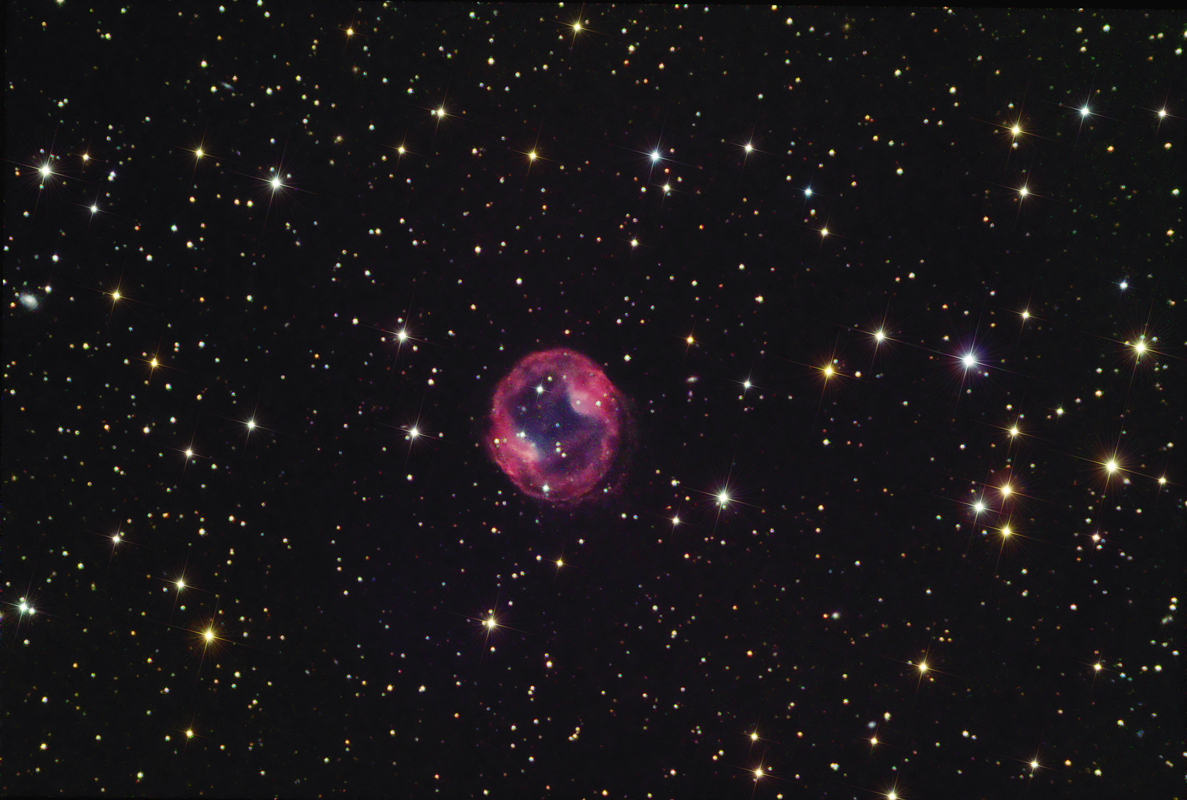
Planetary Nebula

Exposure: L = H alpha 180 min 1x1, RGB 60 min each
Date: March 23, & 25, 2011.Location: RA: 07h 57m 00s Dec: +53°24'00" Approx 1° just south of west from NGC 2505.
Comment: "Planetary nebulae" are misnamed - they are called by this term simply because they are circular, "like a planet". The standard explanation for these objects is that they are the remains of stars that have exploded. Several other explanations are also offered. The red area of the object is hydrogen plasma (ionized H).There are several faint galaxies scattered throughout this field of view. One lies almost on the left edge of the picture slightly above half-way up. This is PGC 22186, magnitude 14.3.
A tiny pair of galaxies (PGC 2439677 and 2439961, mag 16.7 and 17.7) lie just to the right of the object, about two radius lengths from its central blue star. These two are the faintest objects I have been able to identify in my images.
Other than those, and several other faint galaxies, the nebula and all the stars in this image are within our Milky Way galaxy. The brightest of those stars (the ones on the right hand side of the picture) are all of magnitude 9 or dimmer. The planetary nebula itself is magnitude 13.
© Don Scott
The Holin A. Grotch Observatory
